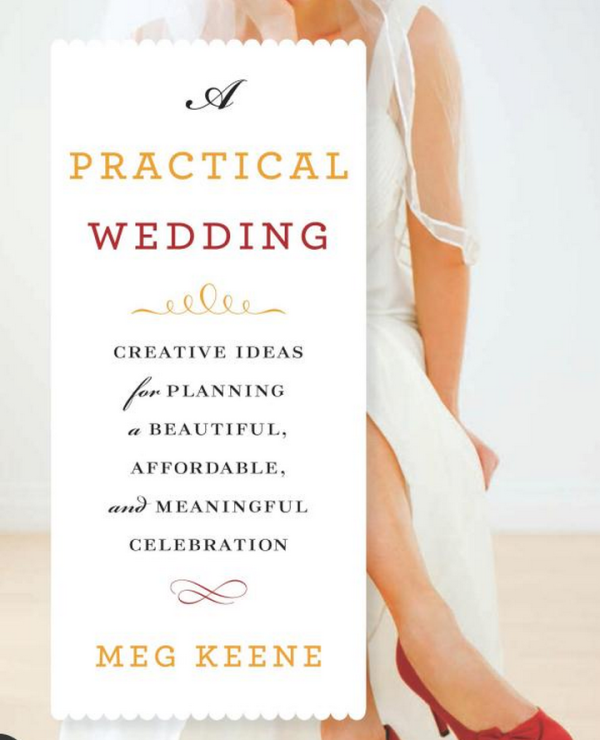 A Practical Wedding by Meg Keene was clear and seemed reasonable enough, though I’m not getting married or planning a wedding. It’s part of a stack of books I’m chewing through in order to get a better perspective on the entire wedding industry–and especially the many experiences that bride’s themselves go through in the process, and which I only have a limited perspective on as a wedding photographer.
A Practical Wedding by Meg Keene was clear and seemed reasonable enough, though I’m not getting married or planning a wedding. It’s part of a stack of books I’m chewing through in order to get a better perspective on the entire wedding industry–and especially the many experiences that bride’s themselves go through in the process, and which I only have a limited perspective on as a wedding photographer.
I wondered a bit about where I’d write my little book-report on this one. After all, this website wouldn’t be a bad place to put it. But it’d certainly be a bit random. Maybe for lack of a more fitting place, or perhaps in hopes that a bride will stumble upon this personal website here and then leave convinced that I am in fact personally interested in what she’s going through, here it will go.
In 9 chapters (10 is really kind of just a bonus), Keene covers pretty much everything. She lays thought foundations; covers the basics of guests lists venues and food; challenges the term ‘tradition’; gets quite blunt about budgets; provides useful insights into the nitty-gritty of planning; Provides an overview and new perspective on DIY; gives advice on getting married in the middle of personally traumatic times; Helps provide a guide to choosing the right ceremony; And good advice for getting along with the imperfections of the wedding day.
From my perspective of someone working parallel to all of this, I found two chapters particularly interesting, for different reasons.
First, chapter three, which helps to put some historical context around many of the traditions that we spend a lot of money fulfilling. I liked this perspective because many of the bride’s I’ve worked with seem to have been goaded into some of, or even most of, the traditions by well-meaning family members. I don’t think tradition is worth the effort if it doesn’t mean anything.
Second, chapter 5, covers wedding DIY. I liked this chapter and was simultaneously frustrated by it. Keene sets some reasonable expectations, even changing it from DIY, to DIT, “Do It Together”. She covers some of the good reasons to DIY parts of your wedding, like the need to keep busy while there are things that might otherwise cause worry, or simple budgetary concerns. And, of course, DIY because you like being crafty.
But there were two places that I think her advice needed to be more fully disclaimed, or perhaps matching expectations should have been more carefully set. Those were in sections titled “How to DJ Your Wedding” and “How to DIY the Wedding Photography”.
I have been to a lot of weddings. I’ve been to weddings with less than stellar food, or almost no food. I’ve been to weddings that were poorly decorated. I’ve been to weddings in back yards and community centers. I’ve been to weddings that were late, or under the ridiculously hot sun. All of those things were unfortunate. But the two places that seem to leave deeper scars are when the party falls flat because of lackluster DJ, and when the photos don’t live up to expectations. If the DJ drops the ball and the night fizzles out, that feeling lives on. And if the photos are bad, they’re just bad forever.
In these two brief sections of Keene’s book, the advice she gives is not outright bad. But the sticker price on those two services is usually significant enough that I suspect some brides, in an ambitious fit of gusto, decide 14 months before the wedding date that their community will take care of the wedding photography and her brother will be the “music bouncer” on the iPod. Then, 5 or 6 months out, when considering what it really takes to manage a very important party playlist, or realizing that because of the sunset, none of her guest’s smartphones will be able to get a good picture, she decides she better go ahead and hire someone. But by then DJ’s and Photographer she would have wanted have long since been booked up.
That’s a true story that I’ve heard more than once. Twice, to be specific. I’ve heard it twice.
In Conclusion
I appreciated much of what the author had to say. The title of the book A Practical Wedding really does sum it up well. Almost all of the advice is delivered with honesty, gentleness and inclusiveness. She rarely suggests something is definitively right or wrong and rather sides with it only being so if it is so for you. If you’ve recently become engaged, I think this book will act as a useful resource and encouragement. It’s worth the 8 bucks or whatever it is.

Recent Discussion